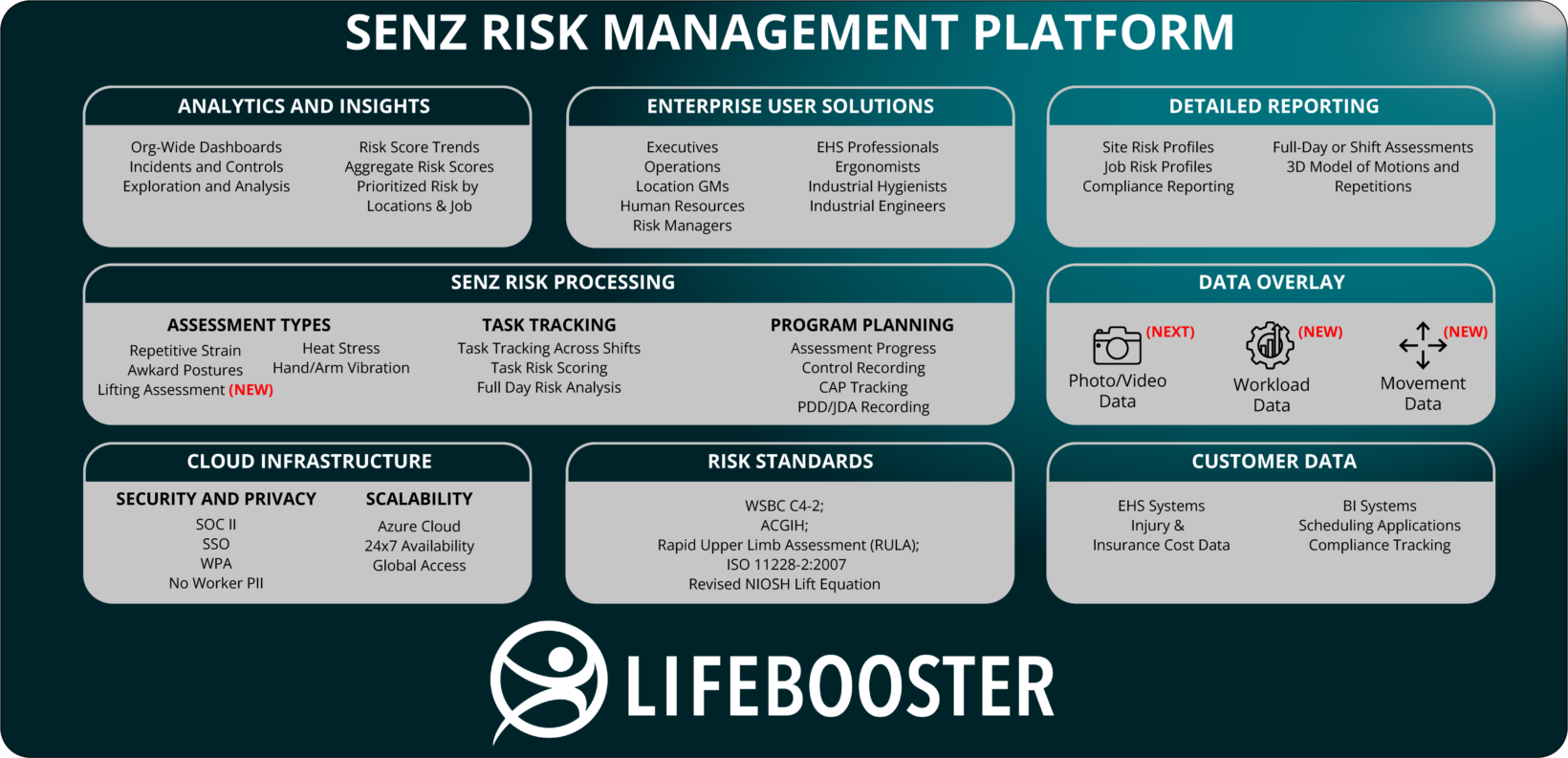
SenzOne: Turning Complexity into One Clear Score.
Behind every SenzOne score is a foundation of proven ergonomics and occupational health science. Our platform consolidates five major risk types — repetitive strain, posture, lifting, vibration, and heat stress — across five key body areas (hands, elbows, shoulders, back, and core).
Each factor is grounded in established standards like RULA, NIOSH, ISO-5349, WorkSafe BC directives, and ACGIH TLVs. We measure risk at the joint level, across dozens of motion and exposure metrics, then apply advanced statistical methods to translate all that into a single composite score (0–100).
This lets organizations compare risk consistently across roles, shifts, and sites — while still drilling into the details of body part contributions or specific risk types if needed.
Risk by Hour: Adding the Time Dimension.
Traditional risk assessments average exposures across an entire shift. But risk isn’t flat — it fluctuates with tasks, fatigue, and environmental conditions.
Risk by Hour applies the same rigorous scoring methodology to each hour of a shift, normalizing results so leaders can see:
- When risks peak (e.g., back strain surging mid-morning)
- Which exposures are driving risk in that hour
- Where to intervene with changes in schedule, task design, or recovery breaks
By visualizing how risk evolves across time, organizations gain a more precise tool for anticipating injuries before they happen.
Wearable Sensors: Objective, Real-World Data.
Our lightweight, multi-sensor wearables capture the data that powers SenzOne — tracking movement, posture, load, vibration, and environmental conditions throughout a shift. This objective, high-resolution data ensures that every score reflects the actual work being done, not estimates or assumptions.
Simultaneous Risk Assessments
Comprehensive risk data is the foundation of any safety initiative. Designed to assess multiple forms of risk simultaneously with each assessment, LifeBooster Senz currently captures risk data for the following risk types:
- Repetitive Strain
- Awkward and Sustained Postures
- Heat Stress Risk
- Hand Arm Vibration (HAVS)
- Lifting Assessment
Additionally, we expose Workload and Movement data to overlay over each risk assessment type.
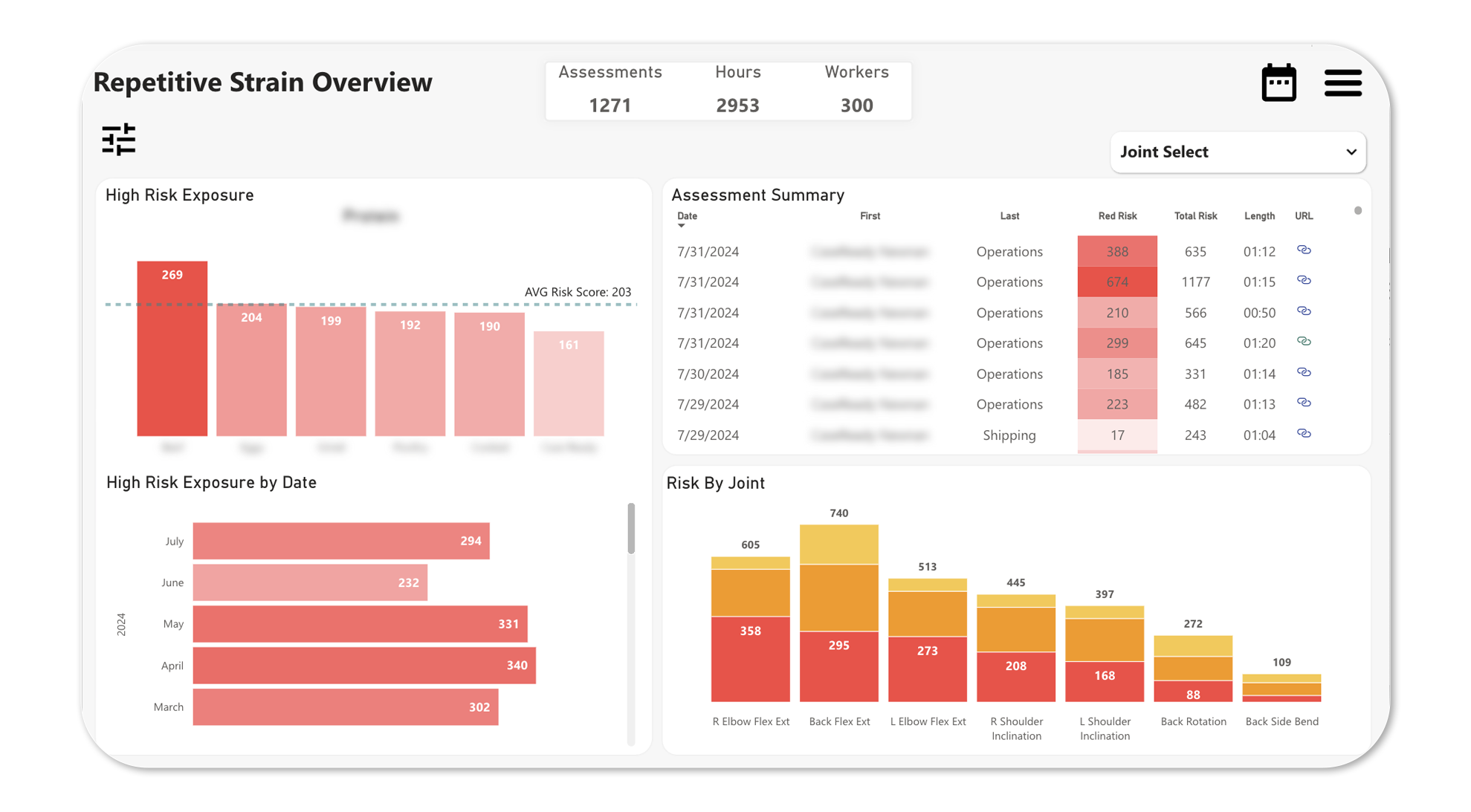
Repetitive Strain Assessment
Adapted from the WorkSafeBC C4-2 directive, this assessment analyzes the impact of repetitive movements on all upper body joints to understand the cumulative strain from different jobs and work tasks.
- Absolute risk event counts for each body segment are summed
- Absolute risk event counts for each assessment are normalized for duration & body segment
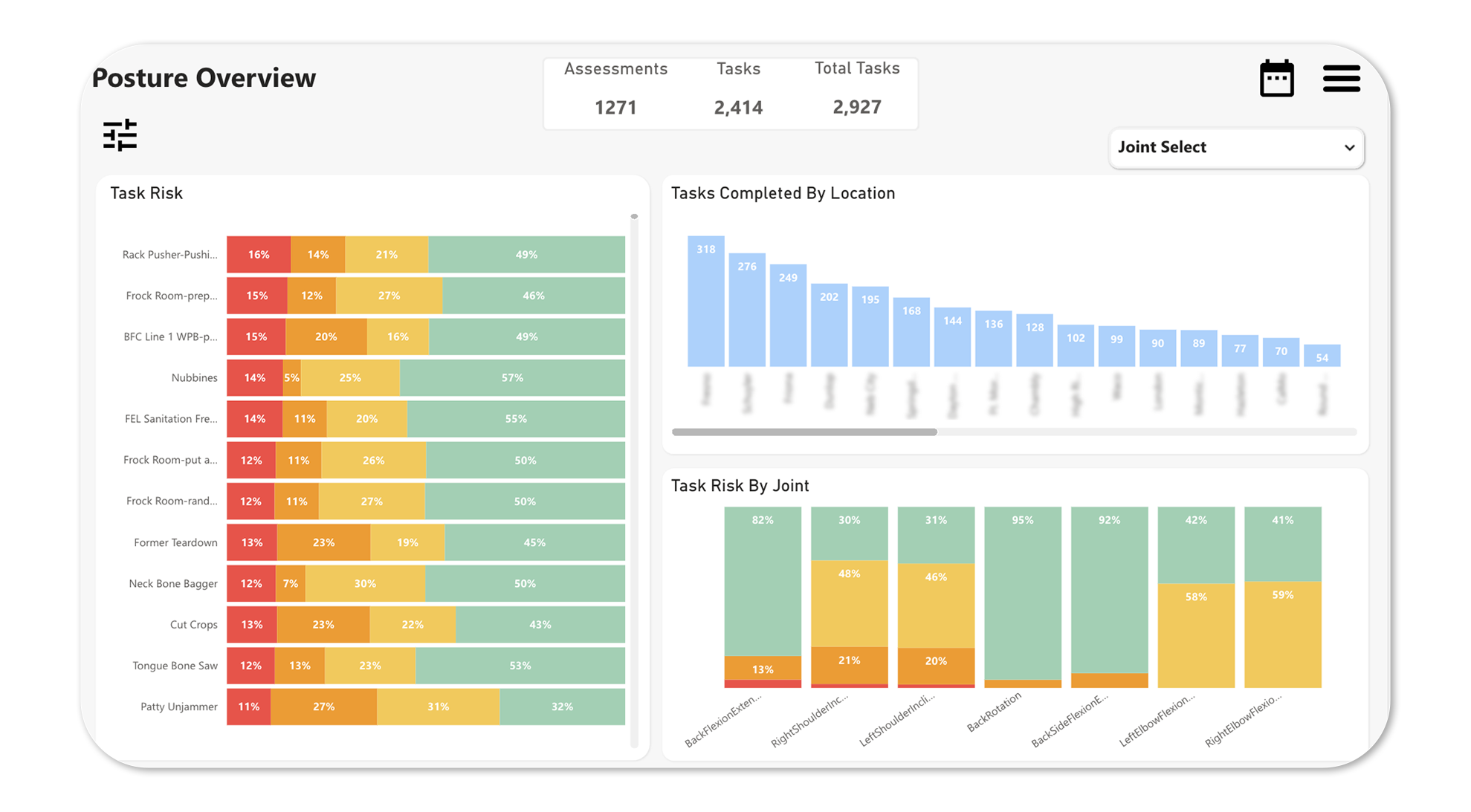
Awkward and Sustained Postures Assessment
With a focus on sustained postures, this risk assessment identifies the time spent above the joint threshold, adapted from the ACGIH TLV for Upper Limb Localized Fatigue
Every 60 seconds the following values are calculated:
- Time spent above threshold
- Duty cycle
- Threshold Limit Maximum Voluntary Contraction
- Overall Maximum Voluntary Contraction

Heat Stress Assessment
Adapted from the 2016 ACGIH TLVs & BEIs, this assessment addresses the gap that exists when there is disparity between ambient conditions and conditions experienced by the body calculated with work conditions
- Body ambient temperature calculated from a weighted average of all sensors
- Dynamic Threshold Limit Value determined by activity level and work duty
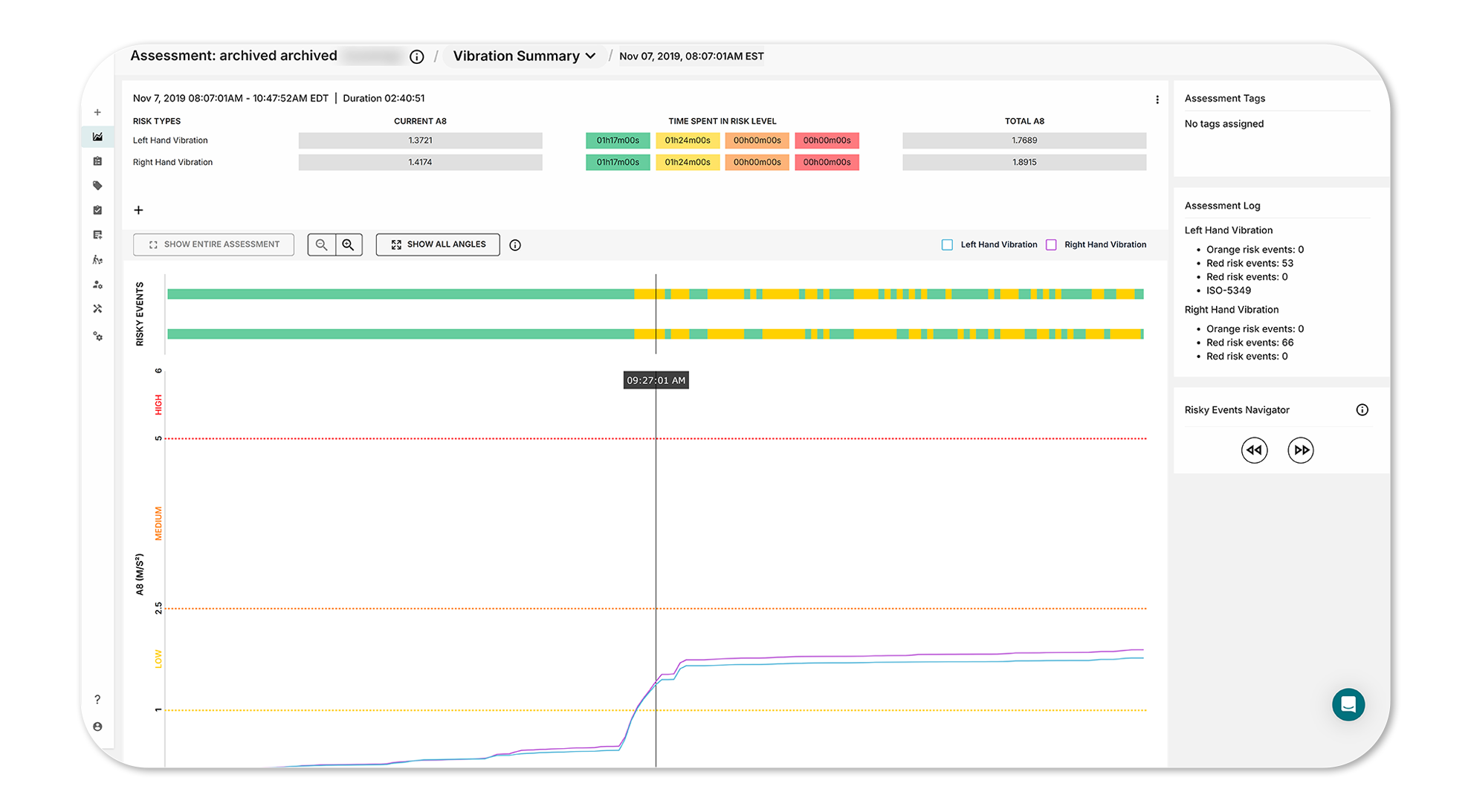
Hand Arm Vibration Assessment (HAVS)
Adapted from the ISO-5349-1:2001 guidance on action and threshold limit values (AL/TLV) for hand-arm vibration exposure, this assessment quantifies the exposure and risk for injury when operating and interacting with vibrating equipment and tools.
- The exposure action value (EAV) for hand-arm vibration is a daily exposure of 2.5 m/s2 A(8)
- The exposure limit value (ELV) for hand-arm vibration is a daily exposure of 5 m/s2 A(8)
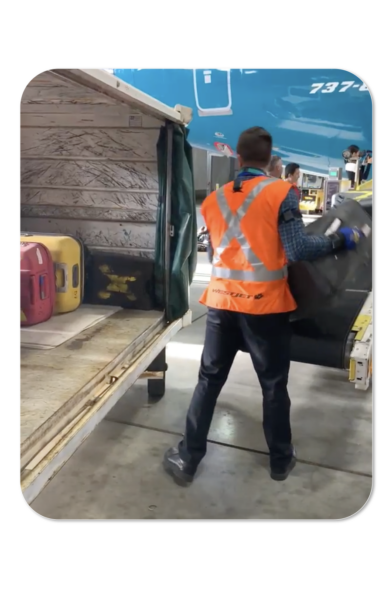
Lifting Assessment
Adapted from the Revised NIOSH Lifting Equation (RNLE), this assessment detects each lift, quantifies the Recommended Weight Limit, and combines all lifts to determine the lifting risk for the daily assessment using the Variable Lifting Index
- A lift is detected when a two-handed hold on an object is identified
- For each lift, the horizontal and vertical geometry of the Load Center of Gravity at the origin and destination of the lift is calculated, along with all other RNLE multipliers
- Frequency Independent Lifting Index used as key metric for quantifying lifting risk
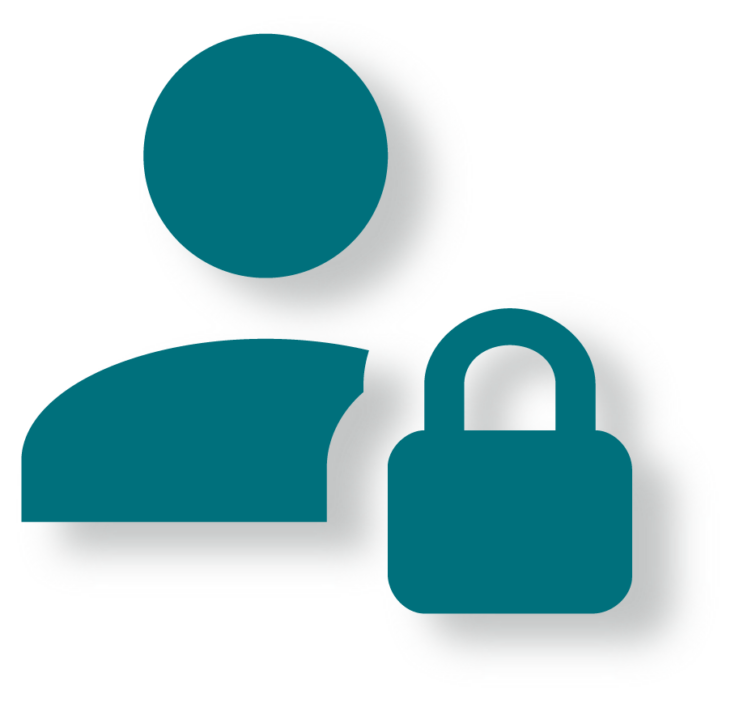
Protecting Your Workers’ Privacy
LifeBooster SENZ categorizes assessments by job type or workstation. No worker Personally Identifiable Information (PII) needs to be collected. This approach prioritizes worker privacy while focusing on understanding the job by ensuring that the dataset represents the worker population rather than the risk to any individual worker. With this approach the variability in risk exposure across the population is still analyzed and correlational analysis is conducted to understand what conditions link to higher risk exposure to help inform priorities and risk controls.
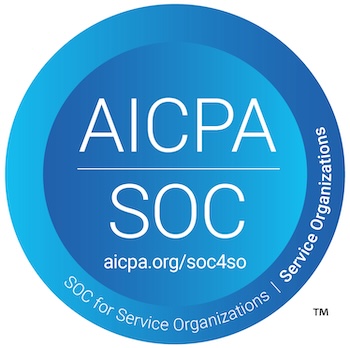
Our Commitment to Security
Built into LifeBooster culture is a commitment to achieving the highest levels of security and privacy of our customers’ data.
LifeBooster is SOC 2 Type II certified, ensuring that our policies and procedures meet the SOC 2 standards developed by the American Institute of CPAs (AICPA). Our continued commitment to security and SOC 2 certification ensures our organizational and technology controls are audited annually by an independent firm. For more information about LifeBooster’s SOC 2 certification or a copy of the report, please email privacy@lifebooster.ca.
LifeBooster SENZ
A state-of-the-art microservices architecture translates into a flexible collection of risk-mitigating features and insights meant to advance workplace safety for a new generation of practitioners committed to improving workplace safety.
